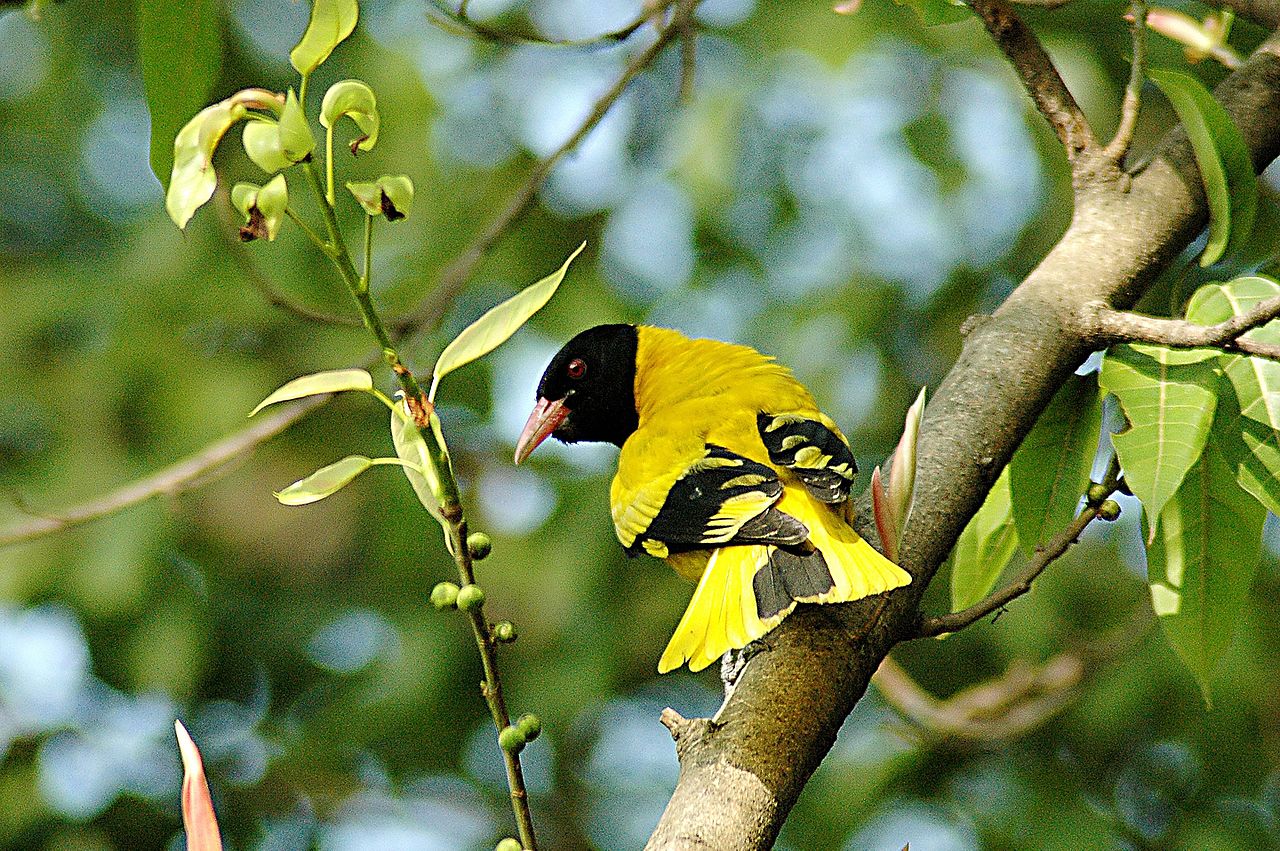Description: The Black-headed Oriole (Oriolus larvatus) occurs widely in woodlands from East Africa southwards. In southern Africa it is found mainly in the east; the core of the distribution lies in Zimbabwe and the Transvaal north of about 26°S, eastern Botswana, Swaziland, KwaZulu-Natal, and along the coastal belt to about 22°E at Mossel Bay.
The distribution extends westwards, mainly with lower reporting rates, at the northern extremity of the atlas region in northern Botswana, the Caprivi Strip, and into extreme northeastern Namibia. This beautiful bird has a vibrant yellow body, distinct blackhead, and flesh-colored beak.
Call – Song – The bird recognized two subspecies in the region; these are poorly differentiated, and appear to have continuous ranges. The Black-headed Oriole often captivates attention itself with magical musical, liquid “wholeuooo” sounds.
The distinctive plumage and call make it unlikely that any mistaken identity occurred. And because it is the most conspicuous of the orioles, it should not have been overlooked, except possibly when breeding. Black-headed Oriole song is a liquid-sounding warble; go together with imitations and whistles.

Habitat: Black-headed Oriole appears to use any moist woodland, preferably evergreen or only lightly deciduous, but was found most frequently in Afromontane Forest. Reporting rates from the Okavango basin were relatively low.
The many isolated peripheral records illustrate that it may also occur in patches of suitable habitat in otherwise unsuitable areas of grass veld, indicating that it may overfly extensive unsuitable habitat at times.
Movements: It is essentially resident but subject to seasonal wandering in some areas. In the southernmost Zones (4, 7, 8), reporting rates were almost uniform; populations show no indication of seasonal movement but local wandering in search of suitable food resources such as Ficus spp may be considerable. In northerly Zones (1, 5–6), a higher degree of seasonality is evident, with a peak of observations towards the end of the dry season.
Hence the degree of seasonality is most marked in the Transvaal (Zone 6) with reporting rates reaching a minimum February–March and then rising steadily to peak August–September. In Zimbabwe (Zone 5), the model shows a marked increase in reporting rates from April–May, reaching a peak in July–August. The causes of these seasonal fluctuations are not known, but as with other canopy birds of broadleaved woodland, leaf fall in the dry season may enhance conspicuousness.
Alternatively, more wandering in the dry season may also have boosted reporting rates. Recoveries of ringed birds are mostly made near the site of ringing; there is one record of a first-year bird recovered 99 km from the ringing site in Zimbabwe.

Breeding: Breeding activity was recorded virtually throughout the year. In Zimbabwe, breeding peaks last October– November, but further south (Zones 6–8) the peak is later, November–January Zones 6–8 also show less synchronized breeding compared to the more distinctly peaked model for Zone 5. Similar differences in the timing of breeding in Zimbabwe, the Transvaal, and KwaZulu-Natal are also apparent in published egg-laying data.
According to Wikipedia “The black-headed oriole forages in the canopy, feeding on small fruit, nectars, as well as large insects. The young are fed mostly with caterpillars”.